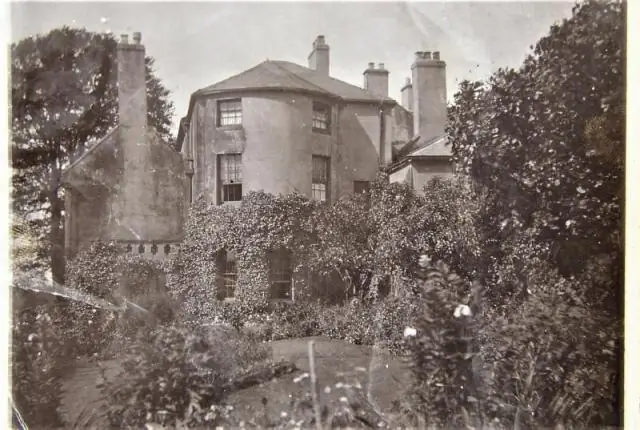
Table of contents:
- Author Bailey Albertson [email protected].
- Public 2023-12-17 12:53.
- Last modified 2025-06-01 07:32.
How to repair a boiler with your own hands

Most houses and apartments have water heaters called boilers. But, like any technique, over time, water heaters fail for various reasons. If necessary, you can repair such a device with your own hands, if you identify the cause of the breakdown in time and eliminate it.
Content
-
1 How a water heater (boiler) works
-
1.1 Features of the operation of water heaters of different types
- 1.1.1 Electric boilers
- 1.1.2 Indirect heating boilers
- 1.1.3 Gas storage water heaters
- 1.1.4 Instantaneous water heaters
-
-
2 Types of boiler breakdowns and their possible causes
-
2.1 Troubleshooting the boiler
2.1.1 Video: how to drain water from a boiler
-
2.2 How to change the heating element in the boiler and clean it
2.2.1 Video: how to replace the heating element in the boiler
-
2.3 How to clean the boiler, replace the anode and the thermal sensor
2.3.1 Video: how to replace the anode in the boiler
-
2.4 How to fix a leak in a water heater
- 2.4.1 Video: how to eliminate a leak in a boiler
- 2.4.2 Eliminating leaks in the water supply line to the boiler
-
2.5 Answers to questions on the operation of boilers
2.5.1 Video: how the boiler explodes
-
-
3 Setting up and cleaning the gas column
- 3.1 Cleaning the column
- 3.2 Cleaning the gas burner nozzles
- 3.3 Video: cleaning the gas column
How a water heater (boiler) works
A typical boiler consists of:
- Housings.
- A special insulating layer.
- Water heating tank.
- Heating element.
- Magnesium anode (an element that takes up all the scale).
- An inlet pipe that connects to a hot water tap.
- Safety and temperature control sensors.
- Control panels with adjustment knobs and display (depending on model).
Since the inner surface of the tank is a place where there is a high risk of pathogens, manufacturers make the tank walls made of stainless steel or titanium coated. Glass porcelain is the most inexpensive coating, but it quickly becomes covered with microscopic cracks.

The boiler is a sealed tank, inside of which there are elements necessary for heating water and ensuring durable and safe operation of the device
Heating elements (heating elements) are divided into:
-
wet (located directly in the water). Wet heating elements are hollow structures with a heating coil inside. The space of the heating element around the spiral is filled with sand or magnesium oxide, that is, a substance with a high degree of thermal conductivity;

Wet heating elements Wet heating elements are in water and heat it due to the transfer of heat from their surface in direct contact
-
dry (located outside the water tank). Dry heating elements are electrically conductive elements that are separated from the water by a ceramic casing. Such heaters are safer, as they do not build up scale, minimizes the risk of short circuits and increases their service life.

Dry heating element Dry heating element is located in a special dielectric flask and transfers its heat to water through its body
According to the fastening method, the heating elements are divided into:
- flanged (pressed with a bolted connection);
-

Flanged heating element The flanged heating element is inserted into a special niche on the boiler body and pressed against it with a nut screwed onto a threaded rod
nut (equipped with threads and screwed in like ordinary bulbs).

Spanner heating element The nut heating element is screwed into a special cartridge on the body of the water heater
Heating elements are usually made of steel or copper
Features of the operation of water heaters of different types
All water heating devices are divided into:
- Electric storage.
- Flowing.
- Boilers for indirect heating.
- Gas water heaters (water heaters).
The word "Boiler" is translated as "Boiler". This means that this type of device includes not only storage heaters, but also various flow structures.
Electric boilers
Electric boilers are the most popular types of water heating devices, which consist of a tank protected by a layer of thermal insulation (for example, polyurethane foam) and covered with an upper casing.
An electric heating element, which is located at the bottom of the tank, heats the water to a certain temperature set on the thermostat. All electric water heaters heat water up to 75 ° C. If water is not being drawn, then the boiler device maintains the required temperature in the mode of turning the heating element on and off. The heating element is equipped with a special protection against accidental overheating, so it will turn itself off when the water reaches its maximum temperature.
The optimum heating temperature for the boiler is 55 ° C, since it is in this mode that the device can provide the required amount of water for hot water supply and save energy
The intake takes place through a pipe that is taken out from the top of the tank, where the hottest water is located. Cold water is supplied through the lower part of the device, where the heating element is located. A magnesium anode protects the metal tank from corrosion. It degrades over time, so it needs to be changed every 2 or 3 years.

Despite the fact that the hot water outlet in most models of boilers is located at the bottom, heated water is taken from the top through a tube that runs inside the tank
Indirect heating boilers
Indirect heating boilers do not generate thermal energy themselves, but heat water for hot water supply from a coil through which the coolant flows.

Inside the indirect heating boiler there is a spiral-shaped heat exchanger, through which the coolant flows from the heating system, the water in the tank is heated by the heat given off through the walls of the coil
Cold water enters through the lower part of the heating device tank, and its exit through the upper one. Such a boiler can easily provide an increased volume of hot water, therefore it is installed in large houses.
The principle of operation of an indirect type water heater is the exchange of thermal energy between liquid media with different temperatures. In order for water to flow from the tap with a temperature of 55 ° C, it is necessary to heat the boiler to 80 ° C. Such devices heat water for a long time, so this fact must be taken into account when choosing. Like electric models, they are equipped with a protective anode, and more expensive options have two coils, through one of which water flows from the boiler, and the other is connected to another source of heat energy.
Indirect heating boilers can be floor-standing or wall-mounted, and are also offered in conjunction with double-circuit gas boilers. Some models of water heaters have additional electric heating elements, which accelerate the process of heating the water if necessary.

In some models of indirect heating boilers, you can install an electric heating element and turn it on if you need to quickly heat water
Gas storage water heaters
Gas boilers, like electric ones, are hung on the wall and have a tank covered with a layer of thermal insulation. There is a gas burner at the bottom, and a chimney at the top. Here, the source of heat generation is the burner, which heats up the water tank. Water heating occurs not only due to gas, but also with the help of heat removal from combustion products. This effect is achieved thanks to a gas duct with splitters, which passes through the tank and exchanges its heat with water. The electronic system automatically controls the operation of the gas burner and, if necessary, extinguishes or ignites it when the required temperature is reached or when it drops. The column has a protective magnesium anode.
Gas storage water heaters can immediately produce a large volume of hot water, but for a short period of time

Gas boilers heat water by burning main fuel and require a full-fledged chimney
Instantaneous water heaters
Flow-through boilers do not accumulate water, but heat it up when the tap is turned on immediately at the moment it passes through itself. They are electric and gas. Gas instantaneous water heaters are modern modifications of well-known gas water heaters, which still supply hot water to many city apartments.
In an electric flowing device, water is heated by a heating element with increased productivity. Despite its small size, the device has a high power consumption and therefore its scope is noticeably limited. Hot water is supplied regularly without heating interruptions.

The flow-through gas water heater is a modern analogue of the popular gas water heater
Types of boiler breakdowns and their possible causes
There are many reasons for boiler breakdown, most of which can be eliminated by hand.
- The boiler does not heat the water. The reason may be a breakdown of the heating element or the electrical system of the device. If the water heats up for a very long time, then a large layer of salt scale has accumulated on the heating element, which must be removed. Likewise, scale can cause the device to be turned on or off too often.
-
The water is overheating. Failure of the thermostat may be the cause.

Thermostat The thermostat has a special temperature sensor and automatically turns off the heating element when the water is heated to a predetermined limit
-
Tank leakage or leakage from under the flange. The problem may be damage to the tank due to corrosion or mechanical stress. The reason is usually a lack of grounding or natural wear of parts.

Heating element flange with gasket Often the cause of a leak from the tank is the wear of a rubber gasket through which the heating element flange is pressed against the body
- The plug or socket is hot. Overheating usually occurs due to a mismatch between the power consumed by the heater and the capabilities of the electrical wiring, or due to loose contacts.
- Extraneous noises in the boiler. Among the possible reasons: scale on the heating element, too narrow water pipes or failure of the check valve, which must be replaced.
-
Error indication on the display. Devices with built-in electronics can malfunction due to power surges. In this case, the electronic module breaks down, which must be repaired or replaced.

Boiler error indication The error indication is often the result of a failure of the electronic module, which is usually easier to replace.
- Hot water is not supplied. This means that the thermostat or heating element is out of order (poorly fixed).
- Too hot water comes in or steam is generated. The reason may lie in the incorrect connection of the boiler or in the breakdown of the thermostat.
- Low water temperature. The temperature mode of the thermostat is incorrectly set, the heating element is installed or out of order.
- Hot water is black. The reason is corrosion, which is caused by too hard water. Boiler replacement may be required.
-
The boiler is deformed (swollen). The reason is high pressure, which is not provided by the manufacturer of the device. A pressure regulator must be installed.

Pressure regulator The pressure regulator maintains the water pressure within the limits for which the boiler is designed
- Boiler shocks. This may be due to the fact that the cable is damaged, the heating element burst, or the electronic panel or control board is out of order.
- The boiler does not turn on. Low water pressure may be the cause. The instructions for each device indicate the nominal head value, which will ensure the high-quality operation of the device. The same problem can arise when contacts burn out, which eventually collapse due to a weakened fastening. Therefore, they need to be tightened regularly.
- The boiler does not turn off. The shutdown button is melted, the temperature sensor is faulty, as a result of which the relay contacts stick and cannot turn off the heating element after the water supply stops.
-
Heating elements often burn out. The reason may be a large layer of limescale on the element or an incorrectly installed unit.

Scale on the heating element If a large layer of scale forms on the heating element, it starts to work with increased intensity and quickly burns out
- The appearance of air in the boiler. Air can enter the system due to a malfunction of the check valve or leakage of the gaskets.
- The boiler does not allow water to pass through or the indirect heating boiler does not see the boiler. This may mean that the device is not properly connected.
- The gas water heater whistles, makes noise or blows. This behavior can be a sign of low gas pressure, insufficient chimney draft, contamination of the ignition burner wick. A whistling sound occurs when scale deposits in the heat exchanger or a foreign object gets there. A malfunction can also occur due to a defect in the valve, which modulates the combustion power of the flame.
- Tore off the pipe from the water heater. The reason may be incorrect connection of the device, wear of fasteners and gaskets, or too much water pressure.
Troubleshooting the boiler
In order to determine the cause of most breakdowns in the water heater, it is necessary to turn it off from the network, drain the water and dismantle it. Then unscrew and remove the cover that hides the heating element and other components of the device. For boilers that are placed vertically, this cover is at the bottom, and for horizontal ones - on the left. Compact devices have a front cover.
-
First, the fastons are removed from the heating elements and the thermostat and the fasteners are unscrewed.

Dismantling the boiler After removing the cover, it is necessary to disconnect the fastons (terminals) of the power supply and unscrew the fasteners of the heating element flange
-
Then you need to remove the thermostat, and remove the temperature sensors from the heating element. Inside the tubes of the temperature sensor there is a special liquid that will leak out if the tubes are cut off, and then the boiler itself will have to be changed.

The location of the temperature sensors on the heating element Thermal sensors cannot be cut, otherwise the entire boiler will have to be replaced
After that, you can diagnose the breakdown of the device.
Video: how to drain water from a boiler
How to change the heating element in the boiler and clean it
Most often, the heating element becomes unusable. A tester is required to check its functionality.
- To begin with, we calculate the resistance of the element according to the formula R = U 2 / P, where U = 220 Volts, and P is the rated power of the heating element indicated in the passport.
-
We select the resistance scale (Ohm) and touch the probes to the two contacts of the heating element to measure the contacts:
-
if the device shows "0", "1" or infinity, it means that the heating element is out of order, as there was a short circuit or an open circuit. In this case, it is necessary to replace the element;

Checking the resistance of the heating element with a tester If the tester shows zero or infinity, the heating element is out of order
-
if the value on the tester is the same as the calculated one, then everything is in order with the heating element.

Tester readings with a working heating element If the measured resistance of the heating element is close to the calculated one, it means that the heating element is working properly
-
-
We unscrew the nuts that hold the heating element, remove it and, if replacement is necessary, install a new one.

Dismantling the heating element In order to remove the heating element, it is necessary to unscrew all the nuts of its fastening
If the tester was not at hand, you can check the heating element for operability using the electrician's control lamp. To do this, we feed "0" from the network to the first contact of the element, and to the second phase through this lamp. If the light comes on, there is no open circuit in the circuit.
If the boiler heats the water very slowly or poorly and makes noise during operation, and the tester shows that everything is fine with the heating element, then it is necessary to descale it. This requires:
-
Take out the heating element and clean it using special products.

Heating element with a large layer of scale All scale formed on the heating element must be removed
-
The top layer of scale can be removed by hand, and the deposits adhering to the surface can be removed by immersing the heating element in boiling water with the addition of citric acid.

Heating element cleaning The top layer of limescale can be carefully removed with a not very sharp knife
-
After that, it is good to rinse the tank from crumbling scale and insert the heating element back.

Tank flushing Before installing the heating element, the tank must be thoroughly rinsed and cleaned from traces of scale
Dry heating element practically does not burn out, but if this happens, then it is removed quite simply. It is necessary to unscrew the nuts and bolts at the bottom of the boiler and remove the burned-out heating element. Then insert the new device and screw it back on.
Video: how to replace the heating element in the boiler
How to clean the boiler, replace the anode and thermal sensor
Anode replacement tools:
- Hose.
- Large pelvis.
- Cleaning agent.
- Knife.
- Screwdriver.
- New anode.
- Spanners.
Before carrying out work, the boiler must be disconnected from the network. The sequence of procedures is as follows:
-
Remove the cover and disconnect the wiring or simply unplug it from the socket. If the boiler has an automatic machine, then it is necessary to turn it off.

Boiler wiring In order to disconnect an electric boiler from the mains, it is usually enough to remove its plug from the socket
- Shut off the water supply to the boiler inlet and the pipeline. Disconnect the pipes from the tank.
- Open the cold water valve. Since cold water will flow from below, and hot water is usually supplied from above under pressure, a vacuum will be created when the tap is opened. Therefore, it is necessary to supply air through the hot water supply connection.
-
Place a basin under the boiler and unscrew all fastening screws with a screwdriver. Remove the protective cover. We will have access to heating elements and temperature sensors.

Boiler cleaning When removing the heating element from the tank, dirt may sprinkle, so a wide basin must first be placed under it
- Remove the flange and temperature sensors.
- Remove the heating element without damaging the rubber gasket.
- Remove the boiler from the wall, put it in the bathroom and direct the water hose inside so that all limescale residues are washed out of the tank.
-
To clean the heating element, take 50 g of citric acid and one and a half liters of water. Put a heating element in the solution and leave for 2 days.

Cleaning the heating element in citric acid solution The heating element should be left in a citric acid solution for two days
-
Remove the anode and look at its condition. If there is only one pin left, then you will have to buy and install a new anode.

TEN with a spent anode If the magnesium anode has exhausted its resource, you need to buy and install a new one
- After cleaning, install the heating element with a magnesium anode back.
-
If necessary, you can replace the thermal sensor if it is out of order. It will not act on the boiler itself, so the device will switch to normal operation. A scale with an arrow or a digital indicator can be installed in the boiler.

Replacing the temperature sensor When performing work on routine cleaning of the boiler, at the same time, you can replace the thermal sensor by installing a more modern model with an arrow or digital indicator
-
Assemble the boiler upside-down. Here you need to pay attention to the condition of the gaskets. If they have deteriorated, it is best to replace them with new ones to avoid leaks from the water heater after assembly.

Boiler gasket Rubber gaskets are consumables, so it is better to replace them with new ones
- Connect the boiler to the mains after it is completely filled with water. Pay attention to leaks and how quickly the device warms up. If water does not drip anywhere, and the boiler is working well, then the work on cleaning the heating element, replacing the anode and temperature sensor was done correctly.
Video: how to replace the anode in the boiler
How to fix a leak in a water heater
If water begins to drip from the boiler, it means that the seal on the flange is worn out or the tank itself is rusted.
We unscrew the tank cap from the bottom and simply replace the worn out gaskets with new ones. In most cases, the problem is solved in this way.
Video: how to fix a leak in a boiler
If the internal tank is damaged, you will have to replace it with a new one, since it cannot be repaired. The walls of the tank are made of thin metal 1-2 mm thick and in 95 percent of cases are covered with glass enamel, so it is impossible to weld the container without damaging it.
If the crack has gone along the seam of the tank, then you can try to seal it with epoxy polymer, but this is not for long, since the container will still collapse under high water pressure.
Elimination of leaks in the water supply line to the boiler
When connecting the boiler, shut-off valves are installed for the supply of cold and hot water. A check valve is installed at the inlet of the water heater, which must be adjusted when connecting the system.

The check valve needs to be adjusted when connecting the boiler
The safety (safety) valve is installed on the pipe that supplies cold water, following these recommendations:
- do not install shut-off valves between the heating device and the valve;
-
the flexible hose from the valve must be diverted into the sewer drain;

Draining the hose to the sewer The flexible hose from the check valve valve must be diverted into the sewer pipe
-
to quickly drain water from the tank, a tee with a ball valve must be installed between the valve and the heater.

Tee with ball valve A tee with a ball valve will allow you to quickly drain the water from the boiler if necessary
If water flows from the valve all the time, then its breakdown may be the cause. In this case, a complete replacement of the device is required.
Too much water pressure can also cause leakage. The best solution would be to install a special regulator at the entrance to the apartment, which lowers the pressure to normal.

The water pressure regulator will supply water to the boiler at normal pressure
The safety valve is factory preset. Self-adjustment of the device is made through special screws that can be unscrewed and tightened with a screwdriver, changing the compression power of the device's spring.
After the screw position has changed, it is necessary to set a new pressure level value, which will be indicated in the device manual
Answers to questions on the operation of boilers
- At what temperature does the boiler freeze? Water freezes at 0 ° C, therefore, before the onset of cold weather, it is necessary to drain the water from the tank, if the room where the storage boiler is located will not be heated. Otherwise, the frozen water will begin to expand and damage the internal capacity of the water heater.
- Why might the boiler explode? A boiler explosion can occur if the thermostat and safety valve are out of order. If, when the water is heated to the set temperature, the control thermostat does not turn off the device, the water in the tank begins to boil and the pressure rises. Excess pressure, which has not been relieved by the safety valve, can not only break the pipes, but also rupture the boiler itself. Therefore, it is necessary to monitor the operation of the water heater (whether the heating lamps turn off and whether the boiler itself stops working when the set temperature is reached). If the thermostat is out of order, you must immediately turn off the boiler from the network in order to prevent it from exploding.
- Will the boiler heat up if the light bulb burns out? The water heater will warm up, but in this case it will not be possible to fully control the heating of the water and the operation of the thermostat.
- Will the heating element work with a faulty anode? If the magnesium anode has collapsed, then the heating element in the boiler will heat the water, but in this case the heating element will fail very quickly.
Video: how the boiler explodes
Setting up and cleaning the gas column
The gas column is connected to the water supply and gas pipeline. Therefore, carbon and soot can collect inside, as well as scale that forms when the water is heated. Regular cleaning and tuning of the speaker will help get rid of device failure.
Column cleaning
-
We untwist the column case, and also dismantle the pipes that are located at the inlet / outlet of the device. We remove the column from the wall and turn it over.

Cleaning the gas column All pipes are disconnected from the geyser, then it is removed from the wall and placed on the floor or work surface of the table
-
We fill a rubber pear with vinegar and pour it into the heat exchanger. We leave the column for several hours to cleanse.

Cleaning the heat exchanger Carbon deposits and soot from the walls of the heat exchanger can be removed with ordinary table vinegar
- Then we drain the vinegar and turn the column over, setting it in place. We open the column valve in order to flush the heat exchanger from scale and other contaminants.
-
We examine the radiator for the presence of soot. To clean the burner, shut off the gas supply and then remove the protective cover. Using a vacuum cleaner, we remove soot and soot from the surface of the heat exchanger.

Cleaning the column radiator from soot Soot and soot is removed with a vacuum cleaner
-
Then we assemble the column, hang it in its original place and connect all communications. We check the operation of the burner (whether it lights up well and whether the wick burns smoothly).

Checking burner operation After cleaning and assembling the column, the fire in the burner should be even and well regulated
Cleaning the gas burner nozzles
If there are combustion problems, this may mean that the nozzles are clogged with soot and need to be cleaned well.

The gas is supplied to the combustion zone using nozzles with a thin nozzle, which can become clogged with soot or soot
To do this, turn off the column and clean the nozzles with a thin wire.
Video: cleaning the gas column
Only under the condition of correct operation of water heating devices and their regular maintenance, you can be sure of the long service life of these devices. But if the boiler or gas water heater is out of order, then you can repair the units with your own hands, without involving specialists.
Recommended:
How To Check The Serviceability And Repair The Grinder Anchor With Your Own Hands, Step By Step Instructions, Video
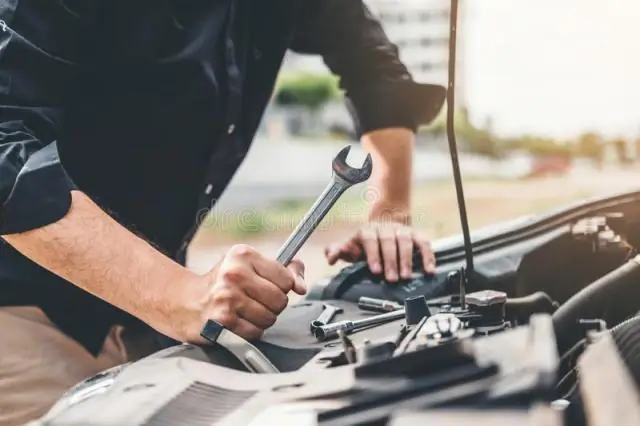
How to check the grinder anchor for faults. DIY repair. Rotor selection and replacement
Long-term Burning Stove (including Sawdust And Wood) With Your Own Hands: Diagram, Drawings, Etc. + Video
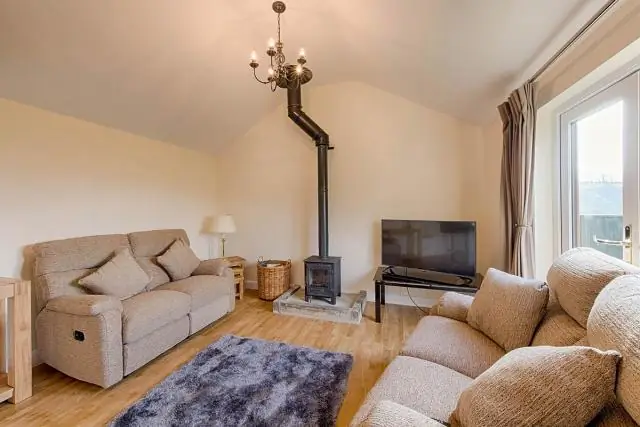
How does a long burning stove work. Production of a long-burning furnace from a gas cylinder and sheet metal. Features of operation and repair of furnaces
How To Paint Furniture With Your Own Hands (including Old Ones) (with Video)
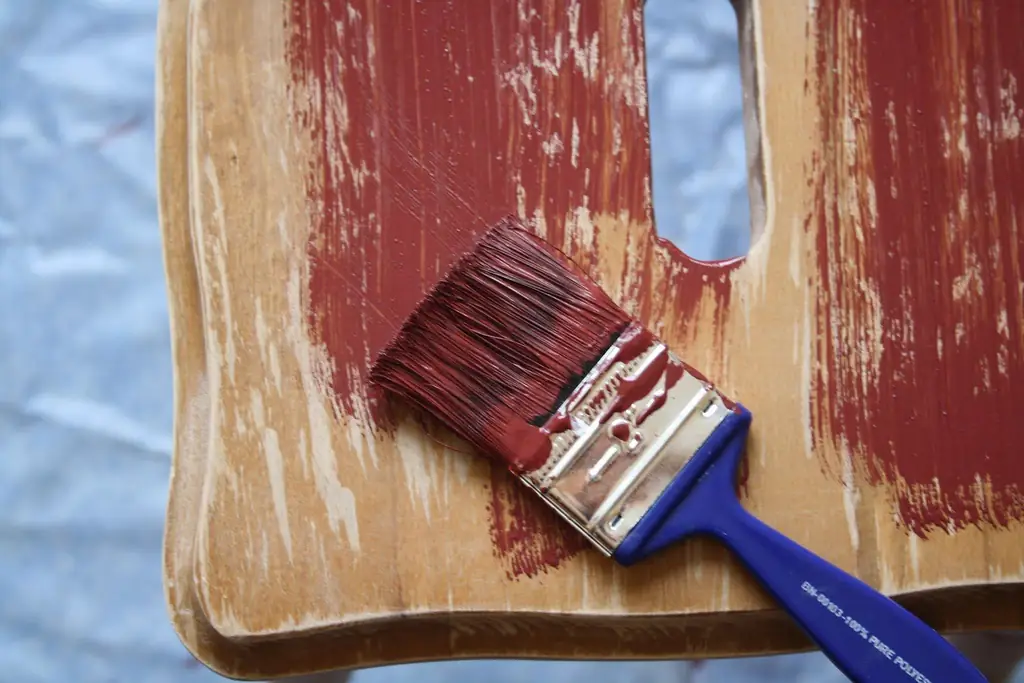
Detailed advice on preparing and painting furniture. Selection of materials and tools. What are the painting options
How To Make A Chimney For A Potbelly Stove With Your Own Hands: Diagram, Calculation (including Diameter), Photo, Video, Etc
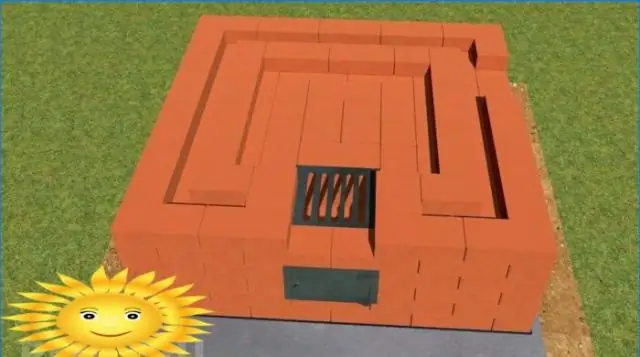
A step-by-step guide for the manufacture and installation of a chimney with your own hands for a stove. The choice of material and rules of operation
How To Eliminate The Creak Of Parquet Flooring In An Apartment With Your Own Hands (including Without Removing It) + Video

How to prevent the problem of squeaking parquet. Causes of an unpleasant sound. A detailed description of how to fix it
